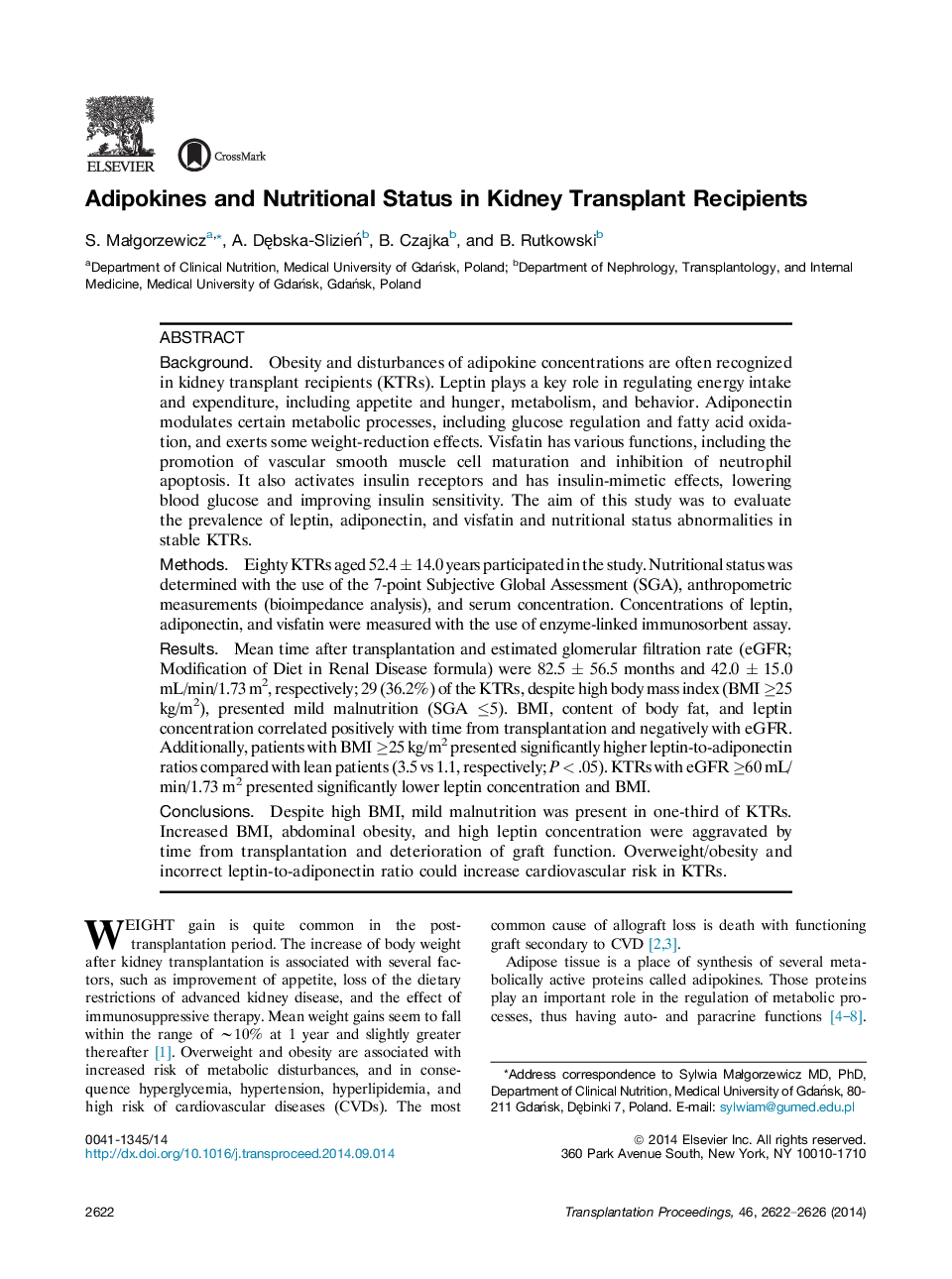| کد مقاله | کد نشریه | سال انتشار | مقاله انگلیسی | نسخه تمام متن |
|---|---|---|---|---|
| 4257948 | 1284552 | 2014 | 5 صفحه PDF | دانلود رایگان |
BackgroundObesity and disturbances of adipokine concentrations are often recognized in kidney transplant recipients (KTRs). Leptin plays a key role in regulating energy intake and expenditure, including appetite and hunger, metabolism, and behavior. Adiponectin modulates certain metabolic processes, including glucose regulation and fatty acid oxidation, and exerts some weight-reduction effects. Visfatin has various functions, including the promotion of vascular smooth muscle cell maturation and inhibition of neutrophil apoptosis. It also activates insulin receptors and has insulin-mimetic effects, lowering blood glucose and improving insulin sensitivity. The aim of this study was to evaluate the prevalence of leptin, adiponectin, and visfatin and nutritional status abnormalities in stable KTRs.MethodsEighty KTRs aged 52.4 ± 14.0 years participated in the study. Nutritional status was determined with the use of the 7-point Subjective Global Assessment (SGA), anthropometric measurements (bioimpedance analysis), and serum concentration. Concentrations of leptin, adiponectin, and visfatin were measured with the use of enzyme-linked immunosorbent assay.ResultsMean time after transplantation and estimated glomerular filtration rate (eGFR; Modification of Diet in Renal Disease formula) were 82.5 ± 56.5 months and 42.0 ± 15.0 mL/min/1.73 m2, respectively; 29 (36.2%) of the KTRs, despite high body mass index (BMI ≥25 kg/m2), presented mild malnutrition (SGA ≤5). BMI, content of body fat, and leptin concentration correlated positively with time from transplantation and negatively with eGFR. Additionally, patients with BMI ≥25 kg/m2 presented significantly higher leptin-to-adiponectin ratios compared with lean patients (3.5 vs 1.1, respectively; P < .05). KTRs with eGFR ≥60 mL/min/1.73 m2 presented significantly lower leptin concentration and BMI.ConclusionsDespite high BMI, mild malnutrition was present in one-third of KTRs. Increased BMI, abdominal obesity, and high leptin concentration were aggravated by time from transplantation and deterioration of graft function. Overweight/obesity and incorrect leptin-to-adiponectin ratio could increase cardiovascular risk in KTRs.
Journal: Transplantation Proceedings - Volume 46, Issue 8, October 2014, Pages 2622–2626
